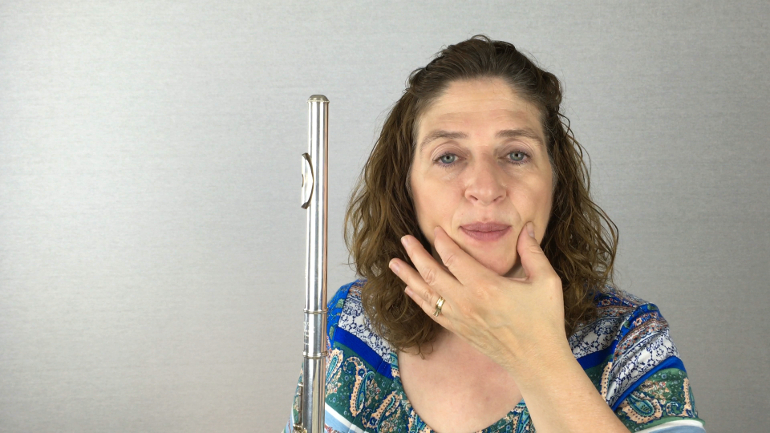How many of you have trouble in a solo when you have to play a low to high note leap really fast? I can think of etudes, Mozart Concerto in G, Prokofiev Sonata, to name just a few that have this issue in the solo. When moving fast, the easy part is playing the high note. The difficult part is playing the low note. If the solo is slow, it’s an easy transition. But when it’s fast, it gets very difficult to do it properly with good tone.
When you’re playing low to high leaps such as Mozart’s Concerto in G, our low register notes get lost. The tone dissipates, it gets airy and then they just don’t come out as strong as the high ones.
The Problem Comes from the High Note
When you play the high note, the embouchure and air speed change. That high note gets the priority for the embouchure! Then when you try for the low note, the air speed may drop some. But the embouchure stays in the high position. That’s the problem. It’s hard to get good low notes with your embouchure in the high position.
Try this with a passage. Play high notes and then try playing low notes with the same embouchure. You’ll see that they don’t sound properly.
Now, play the same passage and do the opposite: keep the low embouchure and play the high notes.
Try it slowly at first and let your embouchure figure it out. Slowly work it faster and faster. It will make such a difference. You’ll find that it’s easier to get good high notes with your embouchure in the low position.
Additionally, the benefits from using this technique are that your high notes will be better in tune and you will be less likely to over blow.
Remember:
Keep a Low Embouchure When Performing Low to High Leaps
Practice this and you’ll see that it really works.
Have fun!
DoctorFlute
Watch me demonstrate this:
FluteTips 43 How to Get Good Tone From Low to High Leaps

